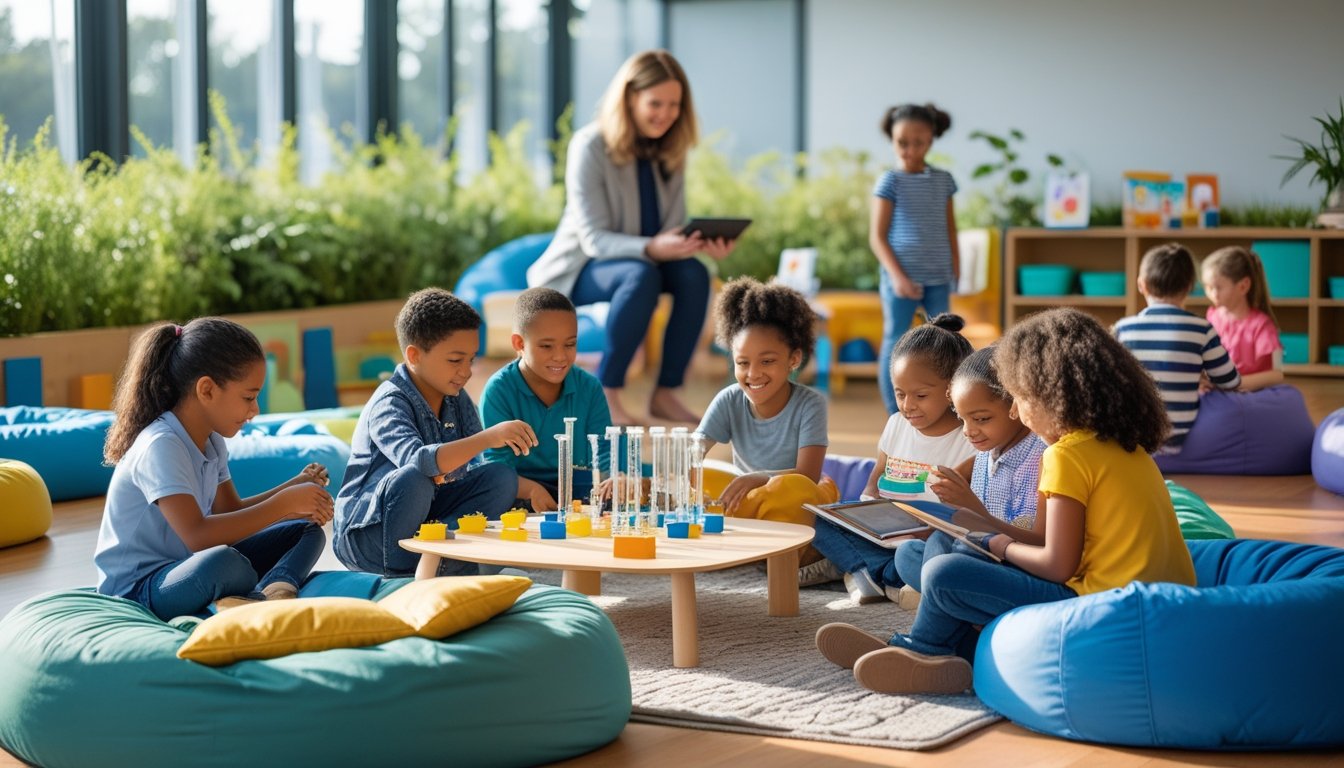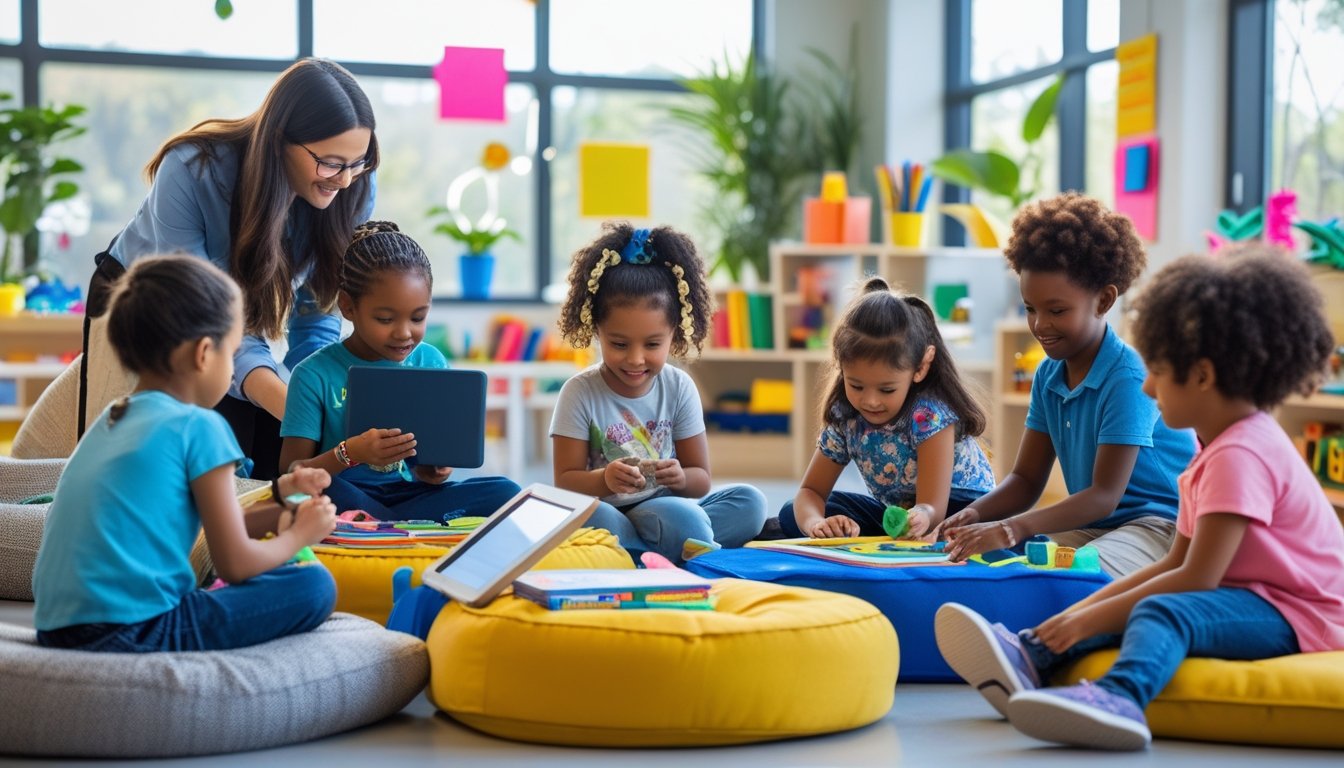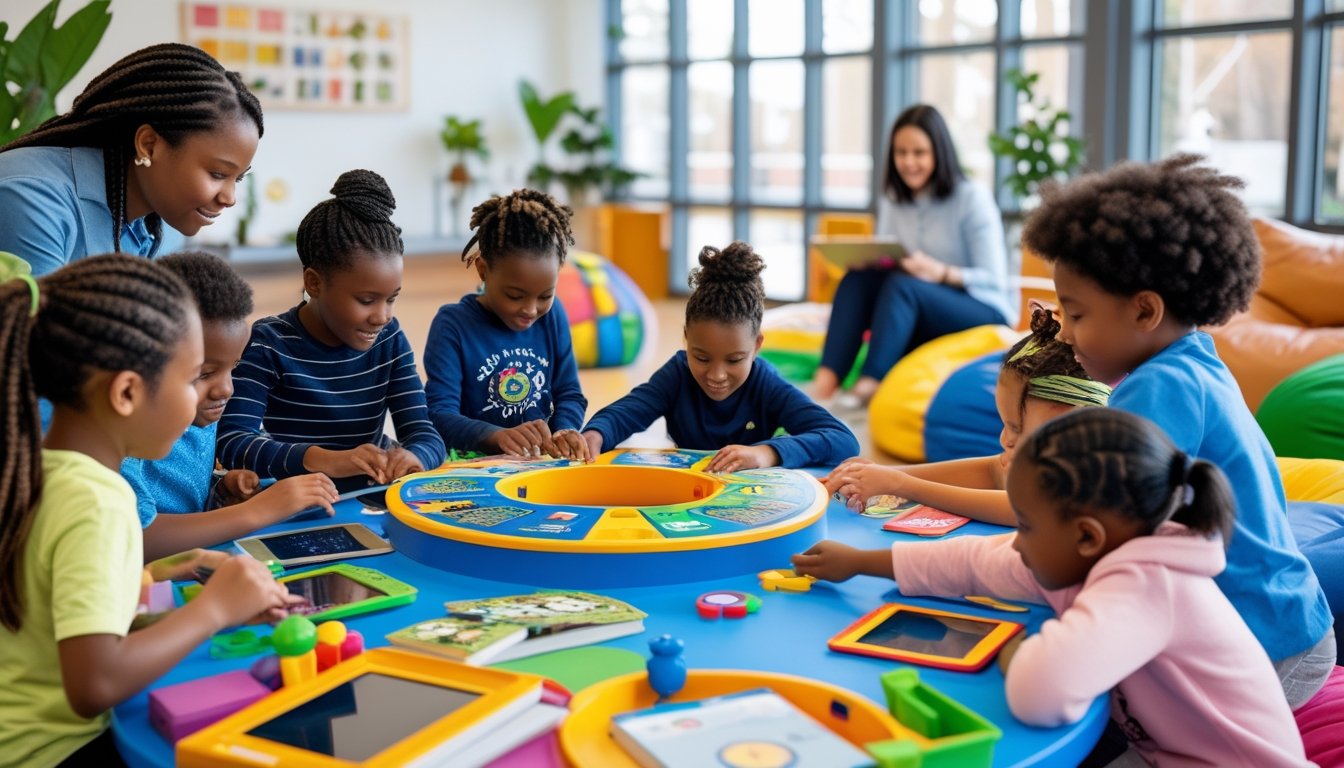Late updated: 14 May 2025 11:05
Written by:
Exploring Alternative Learning Spaces for Children: Enhancing Education Beyond Traditional Classrooms
Exploring alternative learning spaces for children is a fascinating journey into the heart of modern education. These spaces move beyond the traditional classroom setup, providing unique environments that nurture creativity and encourage young learners to explore and grow. With the growing need for diverse educational approaches, alternative learning environments have become increasingly important in adapting to the varied learning styles of children.

Alternative learning spaces create environments where children can truly engage with their surroundings and each other, resulting in enhanced learning experiences. From colourful, flexible classroom designs to nature-inspired spaces, there's a focus on inspiring the sense of wonder and curiosity inherent in children. These carefully crafted spaces incorporate elements that allow for movement, collaboration, and interaction, paving the way for more dynamic forms of learning.
Integrating technology, community interaction, and real-world learning opportunities, alternative learning spaces redefine what education can look like. These environments can often be seen fostering close-knit learner communities and encouraging relationships with the local area. They represent a shift in how we view education and its role in preparing children not just academically but socially and emotionally.
Key Takeaways
- Alternative environments inspire creativity.
- Enhanced learning experience is achieved through unique designs.
- Spaces redefine the educational approach to learning.
Foundations of Alternative Learning Spaces
Alternative learning spaces are reshaping educational landscapes, offering unique environments that foster the growth and development of children in diverse ways. By focusing on the differences between traditional and alternative educational models, we can understand how these innovative spaces provide key benefits for child development.
Defining Alternative Learning Environments
When we speak of alternative learning environments, we refer to educational settings that diverge from traditional classroom structures. These spaces might include community centres, outdoors, or tech-enhanced environments. Flexible Seating: Many alternative spaces utilise furniture that can be moved and adapted easily. Collaborative Areas: Open zones encourage group work and communication. The goal is to tailor the environment to support different learning activities and individual needs.
Key Benefits for Child Development
Alternative environments offer several developmental advantages. By moving away from conventional educational methods, children can engage in more hands-on learning. This approach nurtures critical thinking and problem-solving skills. Furthermore, alternative spaces often prioritise individualised learning, allowing children to progress at their own pace. This approach can enhance their intrinsic motivation and confidence. A focus on social and emotional learning is also prevalent, often resulting in more well-rounded development.
Comparing Traditional and Alternative Education
In contrast to traditional educational settings, where learning is often didactic, alternative education embraces a more holistic approach. Traditional Classrooms: Typically rigid, they follow a structured curriculum and often cater to the average student. Alternative Education: Offers flexibility in teaching methods and assessment types. The environments are designed to inspire creativity and adaptability, preparing students with skills relevant to varying real-world scenarios. Public schools are starting to integrate elements of alternative spaces, recognising these benefits.
These learning spaces offer opportunities to merge academic learning with practical experience, encouraging a deepened understanding and appreciation of diverse educational models.
Exploring Diverse Approaches and Their Impact

In our exploration of alternative learning spaces for children, we dig into various educational models that promote different learning techniques, engagement, and development. Diverse approaches such as Montessori, Waldorf, and self-directed methods offer unique ways to deliver education beyond traditional settings.
Montessori, Waldorf, and Holistic Education Models
The Montessori method encourages self-directed learning through activities tailored to the child's interests and pace, fostering independence and intrinsic motivation. In contrast, Waldorf education integrates arts and humanities into core subjects, supporting imaginative play and creativity.
Holistic education takes these a step further by nurturing physical, emotional, and intellectual aspects collectively. This model often includes practical life skills, helping children connect with their community and environment, thus creating a more rounded educational experience.
Project-Based and Hands-On Learning in Practice
Incorporating project-based learning into educative practice allows children to engage deeply by exploring real-world challenges. Projects not only inspire curiosity but also develop problem-solving skills, making learning immersive and meaningful.
Hands-on learning further enhances this by emphasising interactive and tactile methods, allowing students to directly manipulate objects, which aids comprehension and retention. This practical approach in subjects like science and mathematics highlights the importance of experiential learning and its impact on fostering innovation.
Technology-Enhanced and Outdoor Alternatives
In the digital age, technology-enhanced learning provides opportunities to integrate multimedia resources and interactive tools, expanding the classroom beyond its physical confines. These digital methods encourage collaborative and self-paced learning, adapting to various learning styles.
Conversely, outdoor education offers essential benefits for physical health and well-being. By connecting with nature, students gain invigorating experiences that inspire environmental stewardship and stress reduction, promoting holistic development.
Self-Directed Learning and Engagement
Self-directed learning empowers students to take charge of their educational journey, shaping their study paths and choosing areas of focus. This autonomy fosters a sense of responsibility and commitment to their learning.
Engagement and motivation are key in self-directed environments, with educators acting as facilitators rather than traditional authority figures. By setting goals and reflecting on progress, students experience higher satisfaction and accomplishment, maintaining a strong connection to their educational processes.
Frequently Asked Questions

As we explore alternative learning environments for children, we delve into what sets them apart from traditional frameworks. Understanding these spaces, their potential benefits, and ways to evaluate them can guide us in making informed educational choices.
What constitutes an alternative learning environment for children?
Alternative learning environments for children include spaces that are non-traditional and innovatively designed to foster creativity. These might be outdoor classrooms, home-based structures, or spaces specifically designed to support experiential and interactive learning experiences.
How do alternative schools differ from traditional schools?
Alternative schools often focus on personalised learning, giving more attention to individual student needs compared to traditional schools. They may offer flexible curricula and methods that engage students through hands-on learning, rather than conventional lecture-based methods.
Can alternative learning spaces positively impact a child's education?
Evidence suggests that alternative learning spaces can enhance a child’s educational experience by offering more engagement and adaptation to individual learning styles. These environments often emphasise creative thinking and problem-solving skills, which can lead to deeper educational engagement.
What are some examples of alternative learning activities?
Learning activities in alternative spaces might include project-based learning, outdoor explorations, or collaborated group work. These activities focus on experiential learning, encouraging students to explore their interests actively and learn through real-world experiences.
What are the advantages of exploring non-traditional learning spaces for children?
The advantages include increased student engagement, the development of critical thinking skills, and opportunities for personalised education. Children often find these spaces less restrictive and more aligned with their personal learning needs, leading to more meaningful educational outcomes.
How can one find and evaluate alternative learning spaces for children?
Identifying suitable alternative learning spaces involves researching local educational options, seeking recommendations, and visiting potential spaces. Evaluating them requires looking at the learning philosophies they promote, the flexibility of their curricula, and the resources available to support diverse learning activities.
